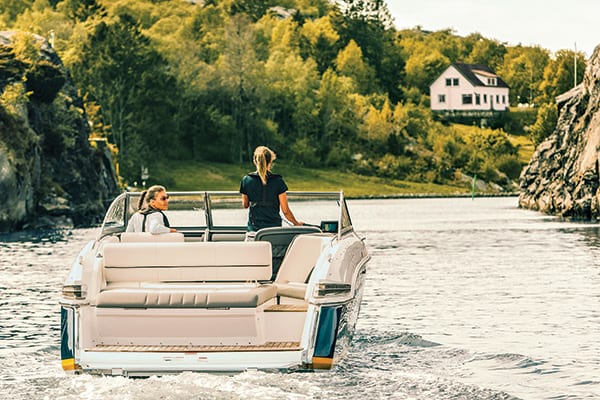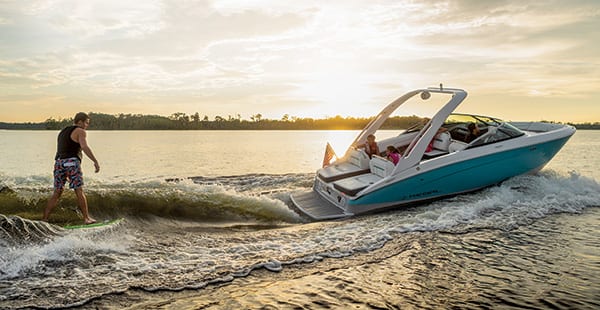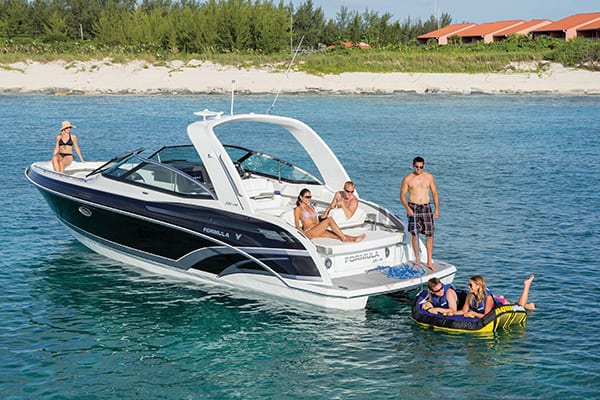Sterndrives: Down but not out

Manufacturers look to innovation and the future
Once the top dog in the boating world, there’s no denying that the sterndrive engine does not hold the place in the marine industry it once did, for the time being.
There’s also no denying that things are changing in the sterndrive world. Manufacturers like Ilmor, Mercury Marine and Volvo Penta are introducing new engines, new features and more, along with a plan to make a statement in the market.

“There are still a lot of segments in the world, especially in the U.S. and freshwater lake markets, where boaters prefer a sterndrive IO package,” said Mercury Marine president John Pfeifer.
“Customers and manufacturers alike still see value in the sterndrive market,” added Volvo Penta president Ron Huibers.
Despite a continued commitment to the sterndrive market, many manufacturers that once only produced sterndrive powerplants, now produce a wide range of propulsion products to match diverse consumer wants.
“We are not only a sterndrive manufacturer,” Huibers said of Volvo Penta. “It’s about offering a whole range of products to the market. It’s what we offer in total and where we are headed with it in the future.”
Outboards run the market when it comes to the 200 HP and under segments. And now outboards are finding there way onto larger boats with the growing power in the horsepower race of the outboard market.
The outboard engine has made a growth run since the 2008 downturn, while the sterndrive market remained stagnant, or even declined.
“The 2008 collapse really exacerbated it and it just never looked back from there. It was in decline prior to that, but it just never really recovered, nor do we think it will,” said Peter Houseworth, director of client services at Info-Link.

Data from Statistical Surveys Inc. show annual sales of sterndrive-powered boats to be dropping at a rate that near exactly matches corresponding sales growth in the outboard-powered segment. Sales have declined from 16,666 in 2012 to 12,472 in 2016, a 25.2 percent drop.
Data from the National Marine Manufacturers Association also shows a drop in the sterndrive segment. NMMA’s New Powerboat Registration Data shows five years of consistent decline in retail sales for the sterndrive market, where the outboard segment shows five years of consistent growth.
Numbers don’t tell all
As reported in Boating Industry’s last look at the sterndrive market in 2017, the numbers do not tell the entire story. Ilmor, Mercury Marine, and Volvo Penta have echoed this statement through and through.
“There are limits to what outboards can do,” said Ilmor Engineering President Paul Ray. “The demand for sterndrive propulsion is still very much there.”
“It depends on what segment of the market you are looking at within the sterndrive segment,” Pfeifer said. “Looking at smaller sterndrive powered runabouts and deck boats, you don’t see the greatest statistics. However, if you look at larger craft powered by larger bowriders and other segments in the 350-400 horsepower, we begin to see growth numbers.”
The entire boating industry is a new landscape compared to the market pre-downturn. Both consumer and manufacturer perceptions of the different market segments are in some circumstances still stuck in the pre-downturn marketplace.
“The market is the market. That’s important to remember,” Huibers said. “What we have to do is develop a better product that makes people say ‘Oh, I want that, rather than that!’ ”
Pfeifer said that consumer perceptions in the market are often wrong when it comes to the sterndrive engine, especially with all of the new engines that are on today’s market.
“From an economics standpoint, a lot of consumers think that because we went through the whole catalyzation of sterndrives, they might intuitively think that ‘oh because it’s more expensive than it was five or 10 years ago, it must be now a less economical option than outboard propulsion,’ but in actuality it’s not,” Pfeifer said.
The sterndrive recovery will be driven by manufacturers desire to push product limits and create a better, more attractive product.
“Our plan is to continue developing along the path we’re on, create more innovative solutions that continue to make the boating experience better,” Ray said.

Sterndrive of tomorrow
False perceptions exist across the board throughout the marine industry, but especially in the sterndrive segment.
“The sterndrive of today is not the sterndrive from 2005,” Huibers said. “Technology changes lead to changes in the market, so that’s what Volvo Penta is doing to grow the sterndrive market.”
Volvo Penta continues to add innovations to the sterndrive engine, such as closed cooling systems to eliminate the need to flush an engine and lessen corrosion, moving to aluminum construction, including manifolds to decrease weight and size, and extended service intervals to lower maintenance costs.
Most recently, Volvo Penta teamed up with Webasto Thermo & Comfort North America to release a fully-integrated engine-driven air conditioner with an optional heating system, specifically designed for open-cockpit sterndrive boats.
“Volvo Penta has a long and storied history of innovations in the boating industry, and this collaborative development program with Webasto has produced yet another industry first,” Huibers said. “Our innovations are driven by our Easy Boating strategy, which aims to make it easier for more families to enjoy the boating experience.
“Embracing new technologies and continued innovation is something we feel very strongly about,” Ray said. “It’s about offering products and features that haven’t been offered before”
 Another large focus for manufacturers — not just in the sterndrive segment, but across the board — is complete connectivity throughout the entire boat.
Another large focus for manufacturers — not just in the sterndrive segment, but across the board — is complete connectivity throughout the entire boat.
“Better and more intuitive prop-to-helm control systems is where we are headed,” Pfeifer said. “More integration with the overall boat, making it easier to control the entire boat.”
Much like many other segments of the marine industry, sterndrives especially draw influence from proven technologies in the automobile industry.
“It’s not always all about marine-purpose built. All of us have automotive experience and we expect that into our boating experience,” Huibers said. “The history books have shown that it has always followed that.”
Ray said that it’s important to look at the automotive industry for improving the fuel economy and performance of sterndrive engines today.
What’s next?
Though now considered more of a niche market, the sterndrive market is not gone, nor will it ever be.
“The stenrdrive market will always continue to exist and obviously there are a lot of sterndrive boats out there, these are very long-life assets,” Houseworth said.
Many manufacturers believe that family recreation in the marine industry is what will continue to drive sales within the sterndrive segment.
The ability to maintain a large swim platform, the safety element when it comes to tow sports, especially with innovations such as Volvo Penta’s Forward Drive, and extra space that today’s smaller sterndrive engine gives to boat manufacturers, gives offerings unrivaled by the outboard engine.
“There really isn’t a better solution to having space in the back of the boat and room to recreate than a sterndrive engine,” said Brunswick Chief Technology Officer David Foulkes.
Though still unclear exactly what’s going to happen next in the segment, Manufacturers agree that the segment isn’t going anywhere.
From increased and improved connectivity, to new power sources and electromobility, the future of the sterndrive market is still very much unwritten.
“In this industry, we have to be dynamic,” Huibers said. “Our job is to keep reinventing and educating.”





…And lets not forget about the i/b models that benefit ski boats with forward weight balance creating a softer wake, or Wakeboard boats that benefit the heavier engine at the back with ballast that creates larger wakes for the sport. How about pod engines/drives in larger yachts, and commercial diesel power coming from large displacement monster movers are also a benefit gained from the torquey inboard to which a small displacement outboard cant easily produce…